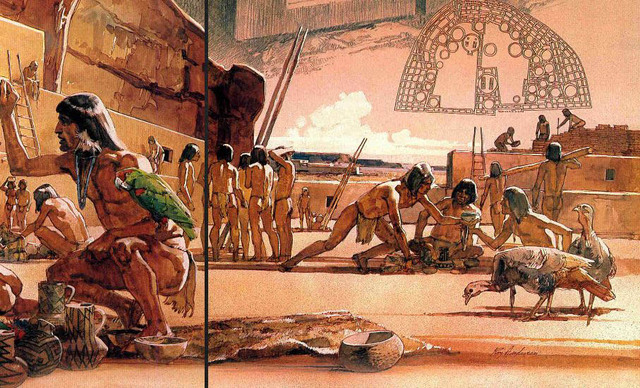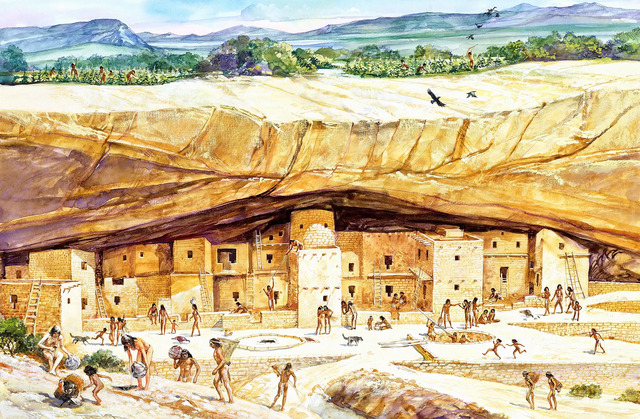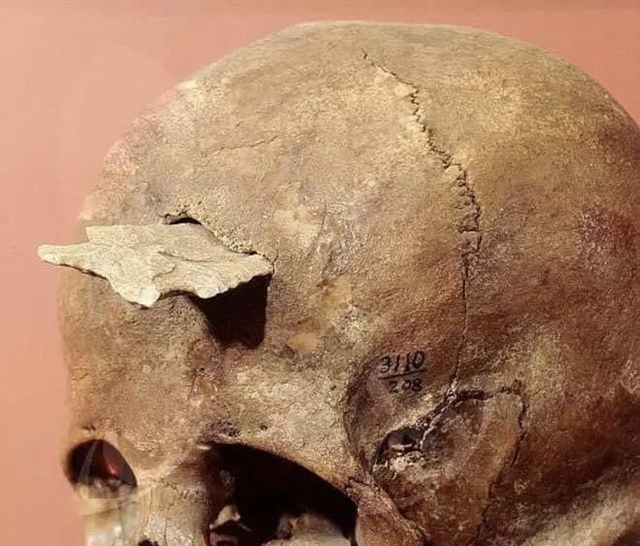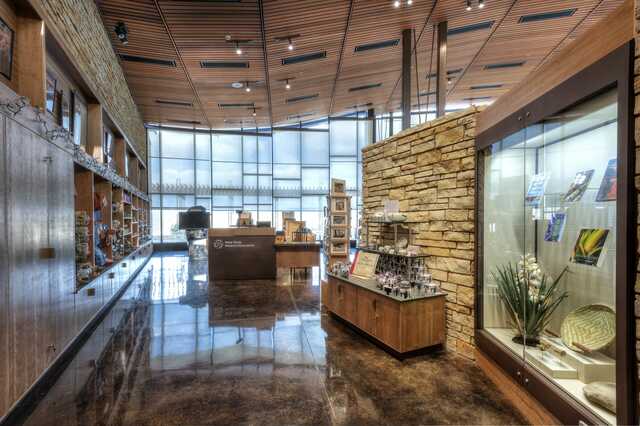In the depths of history, some artifacts tell stories so vivid they feel alive. Among the treasures of Mesa Verde National Park Museum lies the skull of a young Anasazi woman from the Pueblo I Period (750 to 900 CE). This artifact is more than just a relic; it’s a poignant reminder of a life cut short, with an arrowhead embedded in her skull as silent proof of her tragic fate. Her story bridges the ancient and modern, offering a window into the world of the Anasazi civilization.
A Brief Overview of the Anasazi Civilization
The Anasazi, also known as the Ancestral Puebloans, were a remarkable civilization that thrived in the Four Corners region of the United States. Renowned for their intricate cliff dwellings and advancements in agriculture, the Anasazi built a society rooted in communal living and resourceful survival in a harsh environment. Their ability to farm in arid climates and build complex irrigation systems is a testament to their ingenuity.

The Pueblo I Period marked a transformative time in the Anasazi’s history. Settlements expanded, and architectural designs became more sophisticated. Communal pit houses began to give way to above-ground dwellings, precursors to the famous cliffside homes seen in later periods. However, this era was also marked by challenges such as resource scarcity, intergroup conflict, and environmental stress, setting the stage for moments of turmoil like the one that befell this young woman.
The Discovery: A Window Into the Past
Mesa Verde National Park, a UNESCO World Heritage Site, has long been a treasure trove of Anasazi history. Among the artifacts unearthed there, the discovery of the young woman’s skull stands out as a chilling yet invaluable find. Buried for centuries, her remains were uncovered during a detailed excavation aimed at understanding Anasazi burial practices and societal structure.
What made this discovery extraordinary was the arrowhead embedded in her skull—a direct and visible cause of death. Such finds are rare and provide an unparalleled opportunity to study the realities of life and death in the ancient world. The preservation of the skull, despite the passage of time, speaks to the dry, protective conditions of the region.

A Glimpse Into Her Life
The life of a 20-year-old woman in the Pueblo I Period would have been deeply rooted in her community. Anasazi society placed great emphasis on collective well-being. Women often played crucial roles in agriculture, pottery-making, and weaving, contributing significantly to their households’ survival.

By 20, this young woman would have been considered an adult with defined responsibilities. She might have tended crops like corn, beans, and squash or helped maintain the pit houses her community called home. Her life was likely one of hard work balanced by communal gatherings and cultural traditions. Yet, despite her contributions, the arrowhead in her skull tells a story of vulnerability—a life taken in a moment of violence.
A Violent End: What Happened?
The arrowhead lodged in her skull raises pressing questions: Was she a victim of intergroup conflict, a personal vendetta, or a tragic accident? Forensic analysis suggests that the injury was fatal and instantaneous, indicating that the blow was deliberate and powerful.
One possibility is that she fell victim to a raid. The Pueblo I Period was not without tension; competition for resources and territorial disputes often led to violent encounters. Another theory is that she was caught in an act of interpersonal violence, possibly within her own community. While speculative, such scenarios remind us of the complexities of human behavior, even in ancient times.

Alternatively, some have considered the possibility of a hunting accident. However, the trajectory and placement of the arrow make this less likely. What is clear is that her death was sudden and tragic, leaving a wound that archaeologists would uncover centuries later.
The Embedded Arrowhead: A Silent Witness
The arrowhead itself offers valuable clues about the Anasazi’s craftsmanship and way of life. Made of stone, likely obsidian or chert, the arrowhead reflects the resourcefulness of ancient weapon-makers. Its sharp edges and symmetrical design suggest that it was created with precision, a hallmark of skilled artisans.
Arrowheads served multiple purposes in Anasazi society. While primarily used for hunting game such as deer and rabbits, they were also employed in defense and combat. This dual purpose underscores the challenges the Anasazi faced in ensuring their survival. The placement of the arrow in her skull reveals intent—this was no accidental wound but a deliberate act, perhaps during a conflict that erupted suddenly.
Preservation and Display: Balancing Ethics and History
Today, the young woman’s skull is displayed in the Mesa Verde National Park Museum. The artifact draws visitors from around the world, sparking fascination and reflection. However, its display also raises ethical questions about the treatment of human remains.
Museums must strike a balance between education and respect. The exhibit aims to honor her story, shedding light on the dangers and realities of her time. By sharing this discovery, the museum provides a platform for dialogue about the challenges faced by ancient civilizations and the humanity of those who lived centuries ago.
However, some argue that displaying human remains risks dehumanization. To address this, the museum has taken care to present the artifact with dignity, framing it as a means to connect with and learn from the past rather than as a mere curiosity.

Lessons From the Past: Understanding the Anasazi Through Archaeology
The skull of this Anasazi woman is more than a relic—it’s a story frozen in time. Through her remains, we gain insight into the broader context of the Pueblo I Period. Her tragic death hints at the societal pressures and conflicts that shaped Anasazi’s world. Archaeology allows us to piece together these narratives, revealing not only the hardships but also the resilience of ancient communities.
The arrowhead, embedded in her skull, becomes a symbol of survival and struggle. It forces us to confront the fragility of life in ancient times, where danger could strike at any moment. At the same time, it reminds us of the interconnectedness of human experience—the triumphs, tragedies, and complexities that define every society.
Conclusion
The story of the Anasazi woman is a haunting echo from the past, speaking of a life abruptly ended but never forgotten. Her skull, preserved with the embedded arrowhead, is more than an artifact—it’s a testament to the complexities of ancient life and the resilience of human history. As visitors to Mesa Verde National Park gaze upon her remains, they’re not just seeing bones; they’re connecting with a story that transcends centuries, reminding us of our shared humanity and the lessons we can learn from those who came before us.
